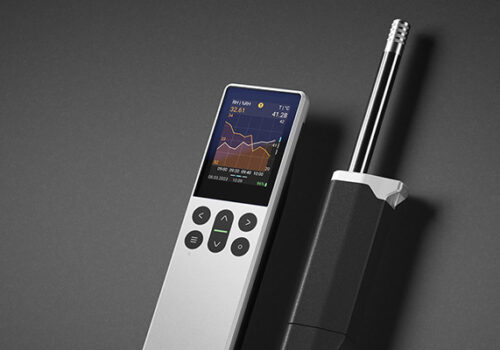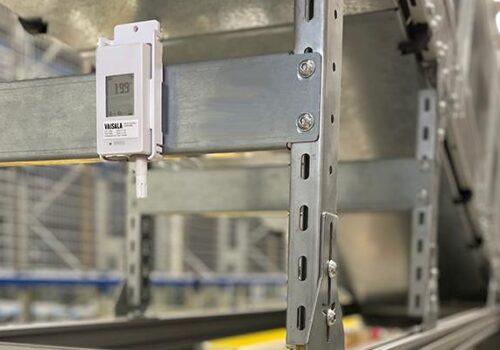Bluetooth is likely here to stay. And while standard Bluetooth won’t have many GxP applications beyond networking your personal devices, BLE might just find some inroads into GxP, in specific roles that match the capabilities of the technology.
I’ve always loved Bluetooth for personal use. That’s not surprising because it was first designed as a tool for a PAN (Personal Area Network). Plus, as a writer I am a word nerd and the name has a great history. It comes from a Danish Viking King by the name of Harald Bluetooth. The Bluetooth logo is the two Nordic runes for his name. Harald is known for having managed to unite the Vikings. The first people who invented the Bluetooth standard for the short-range wireless connectivity were Nordic, so they gave a nod to their history with a Nordic name. Technically it was Ericcson who started working on Bluetooth, and Ericcson is a Nordic company (Sweden) as is Vaisala (Finland). So… let’s hear it for Nordic technological advances. (Starting from the wrangling of the intractable Vikings.)
One day Bluetooth technology started showing up in my professional world, more specifically: the domain of GxP compliance. The GxP world can be arcane and is often slow to adopt new technologies. So the appearance of Bluetooth not only violated some boundary between my own personal and professional life, it surprised me by the speed of its sudden materialization. Yes, there it was… a Bluetooth Data Logger.
There are currently several flavors of Bluetooth. The one we use for our typical PANs is the most familiar, and with a little analysis, one can see that it isn’t a suitable technology for monitoring in the GxP Environment. First, the Bluetooth protocol is limited to seven devices per node. That’s not enough for most monitoring applications. Second, range is limited to ten meters. Third, the Bluetooth communication protocol is drains batteries pretty fast. When it comes to monitoring, we need battery life in the order of years, not days. (Yes, you could plug the devices in, but I think they lose their attraction when they are wired because there are so many proven wired solutions).
But there is another curious type of Bluetooth that has been making some inroads into the GxP world: Bluetooth Low Energy, or BLE (I pronounce it “Bleh”).
Bluetooth Low Energy overcomes two of the three obvious problems with the standard Bluetooth:
• Number of devices limited to 7 per node
• Short duration battery life
Short range is still a limit, but can be overcome with a mesh networking topology. In mesh topology, each device can act as a repeater for the other devices. Because BLE is parsimonious with energy, it can mesh without quickly draining battery life.
Two other advantages of BLE is that it’s inexpensive and devices can have relatively large memories. The technology is being used in innovative ways: in combination with cloud applications, in open API toolkits, and in peer-to-peer cryptocurrency as a way to store data. (Spoiler alert… these benefits don’t actually translate well in a conservative and risk-averse GxP environment.)
The folks who are promoting BLE (for any application) list other benefits:
• Multi-platformed communications.
• High speed pairing
• Maintain a Longer connection time – (blue tooth falling off)
• Low implementation costs (Good, but comes with tradeoffs)
• Energy Efficient (up to 5 years)
• Low data rate (great for monitoring) and always off
All taken into account, BLE is a fantastic advance on Bluetooth technology. But, these benefits don’t really matter in a GxP monitoring application. In a regulated environment, multi-platformed communications are a bad idea because devices should never be unpaired. Further, with typical device calibration intervals of one year, a five year battery life exceeds necessity.
The seeming benefit of low implementation costs often translates as “everything on this device is cheap.” This can mean that the low-cost device comes with low sensor accuracy and drifty clocks, even though it’s full of cheap memory in a plastic shell with a nice form factor. Is the GxP world ready for brightly colored plastics in invocative asymmetrical curvy shapes?
That said, BLE probably has a place in Cold Chain and GDP (Good Distribution Practices). Low cost and short range wireless with a multi-platformed communication protocol makes sense in cold chain because of the nature of GDP. Devices need to be cheap because they are often lost or damaged. They don’t need to be highly accurate (± 0.5°C is enough). Companies in this arena are often not integrated, and therefore don’t share networks, so a standard protocol makes sense.
Bluetooth Low Energy and GxP-Compliance
BLE might also have a place in temperature mapping, especially in GDP environments for smaller spaces.
However, I argue that BLE is not the right tool for the core pharmaceutical and biotechnical industries, or mapping those types of warehouses. It could be a good way to remove cost obstacles that might be preventing distributors to start mapping their fridges, freezers, and trailers. We should remember that it was only in 2013 that GxP regulators officially reminded distributors that they were accountable as part of the regulated cold chain.
That’s not enough time for a cultural change to fully evolve. Maybe a cheaper and easier way to map can help the transition. The accuracy is good enough. A mapping with “good enough” devices is far better than no mapping at all.
And frankly, most of the arguments against mapping with cheap BLE loggers can be solved with smart procedures so the data handling can meet the requirements of Electronic Records (Part 11 and Annex 11). In the end mapping is a simple process. I think we can tolerate a little risk on the data side to achieve a lot on the compliance and control side.
So, Bluetooth is likely here to stay. And while standard Bluetooth won’t have many GxP applications beyond networking your personal devices, BLE might just find some inroads into GxP, in specific roles that match the capabilities of the technology.
Author: Paul Daniel, Senior Regulatory Compliance Expert
Address
Box 81
197 22 Bro
Sweden
For more information, please contact:
Janne Halonen
Sales Engineer
Vaisala Industrial Measurement, Life Science
+46 76 768 60 60
Vaisala is a global leader in weather, environmental and industrial measurement. Building on over 80 years of experience, Vaisala provides observations for a better world. For over 50 of the world’s top life science companies, Vaisala provides measurement devices and monitoring systems for continuous records, reports and alarms. These solutions are used to monitor temperature and humidity conditions in research and development, production, and storage environments. With our solutions and services, life science companies ensure the quality and safety of their products, and maintain compliance with global regulations.







